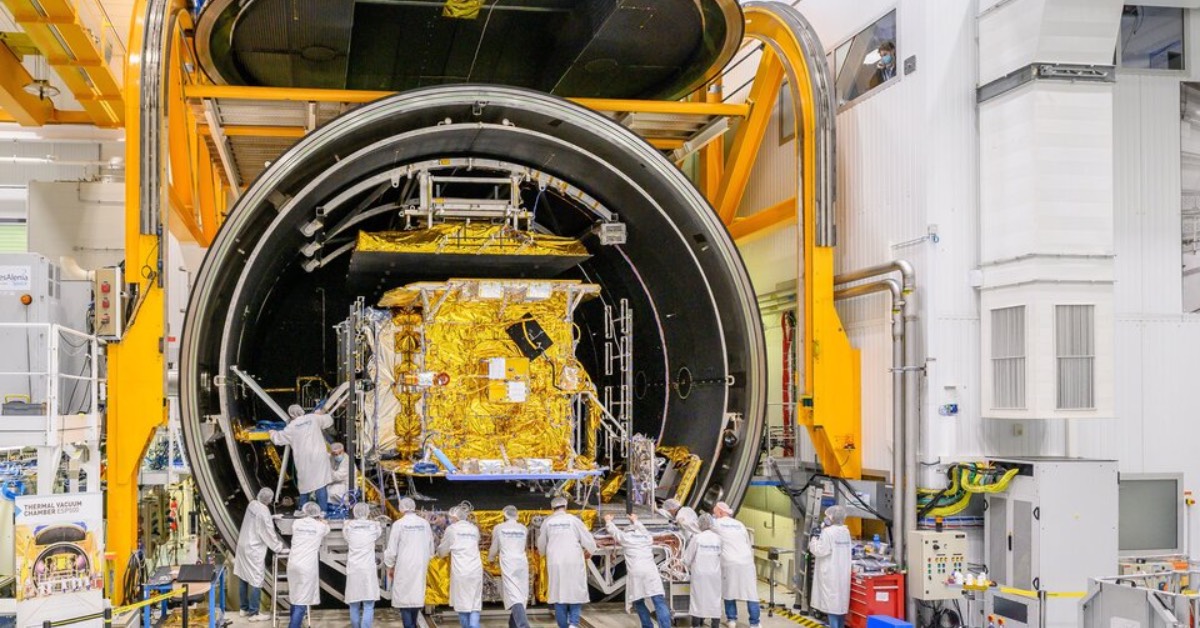In September 2021, a steering board of senior representatives from ESA, the French space agency CNES and satellite manufacturer Thales Alenia Space confirmed that the product line qualification was successfully achieved.
Developed under an ESA Partnership Project, Thales Alenia Space has pioneered the introduction of an innovative thermal control system for the most powerful satellites.
The cooling system is the first mechanically pumped loop to be used on large commercial telecommunications satellites. It was designed to be robust to endure the demanding launch environment and to then operate perfectly, without maintenance, for more than 15 years.
To maintain acceptable equipment temperature limits, the payload needs to be actively cooled by moving the heat away and dissipating it into cold space.
Historically satellites would achieve this using conventional heat pipe networks to transport the heat to radiators on board the satellite. However, for large and powerful satellites such as SES-17, these traditional systems have reached their limit.
High-end Spacebus Neo satellites will instead use a mechanically pumped loop to transport heat to its radiators.
This innovation makes it possible to maximise use of the available surface inside the satellite, to accommodate the payload electronics required for large, very-high-throughput satellites.
Following the successful launch of Eutelsat Konnect in January 2020, Syracuse 4 and SES-17 are the second and third Spacebus Neo satellites, already at the launch site in Kourou, ready to be launched.
Collectively these will provide in-flight validation of the innovative features developed under ESA’s partnership with Thales Alenia Space and the European space industry.
ESA Partnership Projects help to de-risk partners’ investment by boosting innovation and thereby achieving a competitive leap forward in the highly dynamic market for very-high-throughput satellites.
This was achieved thanks to the combined expertise and collaboration of Thales Alenia Space, ESA, CNES and SES, the company that will operate the SES-17 satellite.
ESA’s Neosat programme comprises both Spacebus Neo by Thales Alenia Space and Eurostar Neo by Airbus. It includes development up to in-orbit validation of new satellite product lines for both companies, allowing the European space industry to deliver competitive satellites for the global commercial satellite market.
To date, 15 Neosat satellites have been sold by European industry to six satellite operators, generating exceptional return on investment to industry and participating states.






































